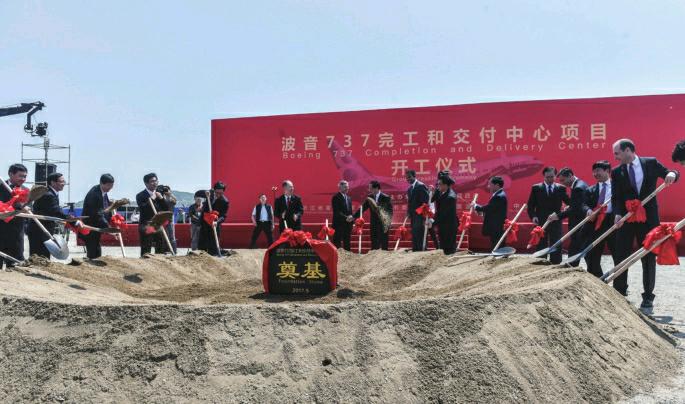China’s Investment Environment Keeps Improving
2017-07-19
According to fi gures from the Department of Foreign Investment Administration of the Ministry of Commerce, in the fi rst fi ve months this year, 12,519 foreign-invested enterprises were established on the Chinese mainland, up 11.9 percent over a year ago; and the paid-in capital totaled 341.08 billion yuan ($50.01 billion), a decline of 0.7 percent compared with the same period last year. These numbers indicate that foreign investment infl ows to China have remained stable.
Despite this, some have accused China of imposing discriminatory treatment on foreign investors and their projects. However, this is not true, whether from the directions of related government policies or their results. Judgments on Chinas investment environment must be based on real conditions.
In recent years China has made great progress in reducing restrictions on market access for foreign investment. The country has revised the Catalogue of Industries for Guiding Foreign Investment twice, and the recent revision draft reduces the number of restrictive measures for foreign investment to 62 from 93 in 2015. China has also been shortening the negative list of sectors off-limits or restricted to foreign investors in its pilot free trade zones, with the number of special management measures down from 193 in the 2013 list to 95 in the newest version that will take effect on July 10.
The country has taken timely and effi cient actions in revising its laws to reform the regime of foreign investment administration. Since October 2016, establishment and alteration of foreign-invested enterprises across China, except those that are subject to special management measures for market access, only need to be put on government record, replacing the system of case-by-case approval that had been in place for more than 30 years.
China has paid special attention to creating and maintaining an environment for fair competition. Premier Li Keqiang said in the Government Work Report at this years full session of the National Peoples Congress in March that foreign companies must be treated the same as domestic companies in license application, regulatory standards, government procurement and access to policy incentives under the Made in China 2025 initiative. At the outset of this year, the State Council unveiled 20 major measures to better attract foreign investment, such as giving greater access to foreign investment in the service, manufacturing and mining industries.
The policies demonstrate the governments determination and commitment in improving the investment environment, while statistics demonstrate how effective these policies are.
According to the World Investment Report 2017: Investment and the Digital Economy, issued by the United Nations Conference on Trade and Development, fl ows of foreign investment to China in 2016 totaled $133.7 billion, down 1 percent year on year. However, global transnational investment went down in general, and foreign direct investment going to developing economies in Asia decreased 15 percent from a year ago on average. Given this background, China remains an attractive destination for foreign investment
Chinese statistics also indicate no great ups and downs in terms of foreign investment. Among major investment sources, Chinas Hong Kong and Taiwan as well as the EU reported growth rates of 12.7 percent, 41.8 percent and 6.2 percent, respectively. China is also trying to attract more investment from countries along the China-proposed Silk Road Economic Belt and 21st-Century Maritime Silk Road. In the fi rst quarter this year, 781 enterprises were established in China by investors from these countries, surging 40 percent, with paid-in capital totaling 8.45 billion yuan ($1.24 billion).
Considering the weak global economic recovery, Chinas achievements in attracting foreign investment are particularly signifi cant.
According to the Business Confidence Survey 2017, launched by the EU Chamber of Commerce in China, most EU enterprises in China saw better performance in the past year, with 55 percent of the surveyed enterprises reporting growth of sales revenue in 2016, which was 5 percentage points higher than the figure in 2015. In addition, 71 percent of the surveyed enterprises reported their pre-tax profits approaching the highest level in 2011; and 61 percent believed China is becoming more important in their global strategy. Against the background of complicated global economic conditions and increased uncertainties, the survey results demonstrate the fact that the Chinese market is increasingly open.
